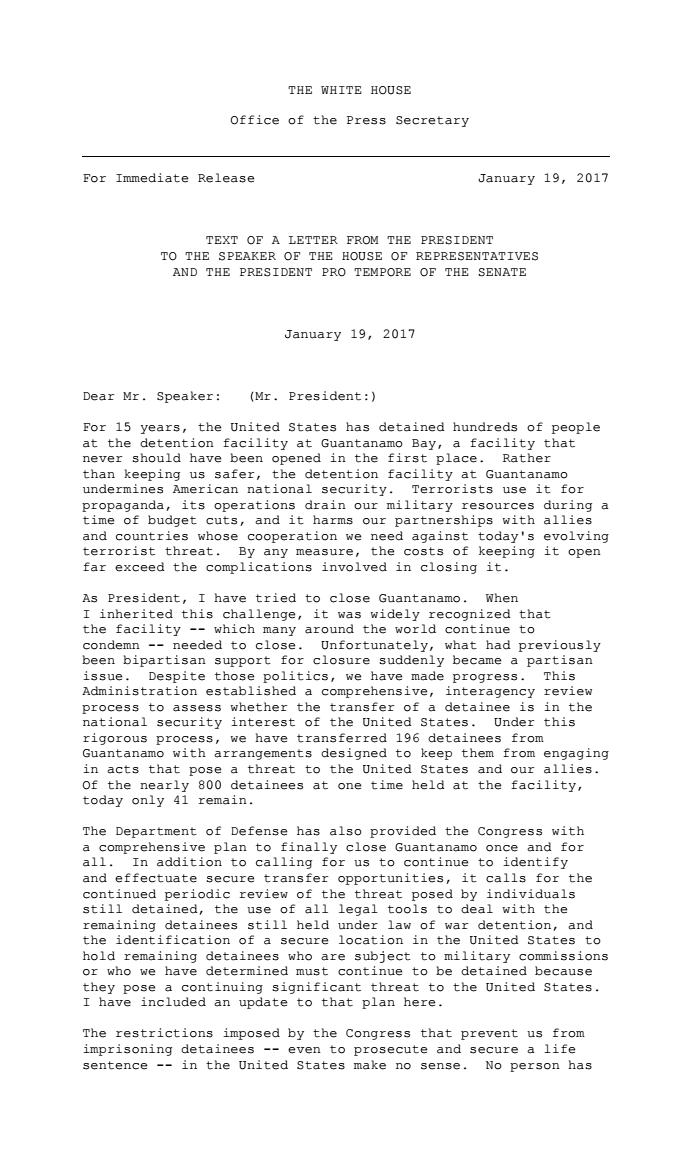Inside the prison perimeter, additional attention has been paid to the health of the now-aging prisoner population. In fact, Guantanamo has an $8.4 million plan to turn the now-empty Camp 5 into a medical complex. The prison’s current medical facility treats detainees regularly. It’s also where prisoners on hunger strikes are sent for forced feedings. A chair with arm and leg restraints sits next to a table lined with liquid meal replacements and feeding tubes. The medical staff proudly tells journalists that detainees have a choice in the lubrication used to ease the feeding tube down their throats. A new addition is olive oil.

The intensive care unit at Camp ECHO, which is part of the medical facility available to detainees on a regular basis.
While the U.S. government maintains conditions at Guantanamo are safe and humane, lawyers and advocates for the prisoners say continued detention has had a crippling effect on many detainees. They say there’s also anxiety over their unknown futures.
One detainee, Mohammed Bwazir, had been cleared for transfer to a European host country in January 2016, after being held without charge at Guantanamo for 15 years.
On his release date, Bwazir walked out of the prison and stepped onto the ramp to the military plane that would deliver him to freedom, when he felt so much anxiety that he turned around and returned to life behind bars.
He said he was overwhelmed about moving to a country with a foreign language and culture, and with no access to his family, his lawyer John Chandler told the Miami Herald.
A year later, in the waning weeks of Obama’s term, Bwazir was one of four Yemenis transferred to Saudi Arabia — where Bwazir’s family were waiting for him.
“I want to give back to my family the 15 years I lost,” he said, upon arriving in Saudi Arabia.
Anxiety and depression are common in Guantanamo. In its 15-year history, seven deaths have been ruled suicides. The medical facility has made psychiatrists and counselors available to the detainees 24 hours a day, seven days a week.
In 2012, Adnan Farhan Abdul Latif died while in solitary confinement. Latif was 36 years old and had spent more than 10 years imprisoned at Guantanamo. The U.S. military ruled that Latif committed suicide with an overdose of prescription medication, complicated by pneumonia.
Remes, his lawyer, does not believe it was a suicide. Remes said he met with the detainee’s family in Yemen five years before Latif’s death, at a time when he was on a hunger strike to protest his detention without charge at Guantanamo.
“Nobody believed that he had committed suicide,” Remes said. “And the cause of death, while it has been ruled a suicide, it’s clear that it has been caused by ingesting an excessive amount of medication. But people don’t know what his motivation was, and how he could have amassed the medication in the first place, given the security he was under.”

In 2012, Adnan Farhan Abdul Latif died while in solitary confinement.
But the Pentagon stands by its suicide determination, a spokesman saying it did not have “anything to add to the US military assessment of what happened.”
As of October 2016, the medical staff said no detainees had mental health concerns, according to Navy Commander Robert Sylvester, who runs the Guantanamo medical facility.
For Remes, the concept of providing mental health treatment at Guantanamo is a “sham.”
“There’s a fundamental contradiction in providing mental health for… people who have been brutalized,” Remes said. “The goal wasn’t to treat these men, seriously, it was to subdue them.”




























